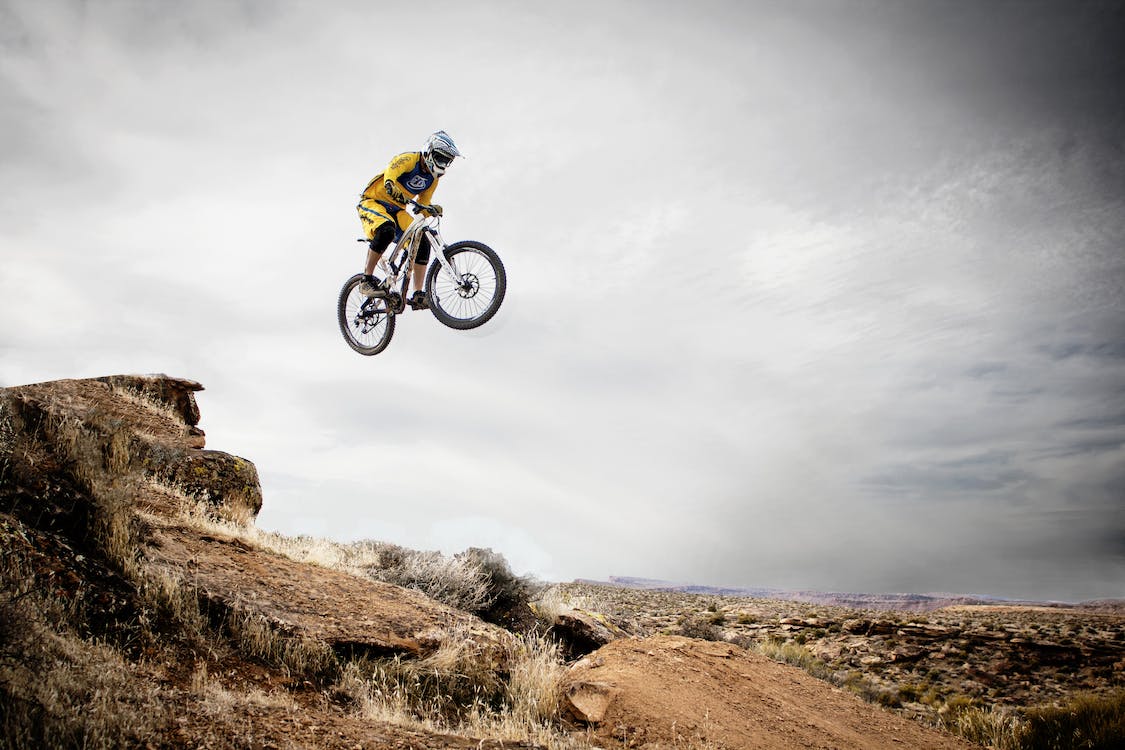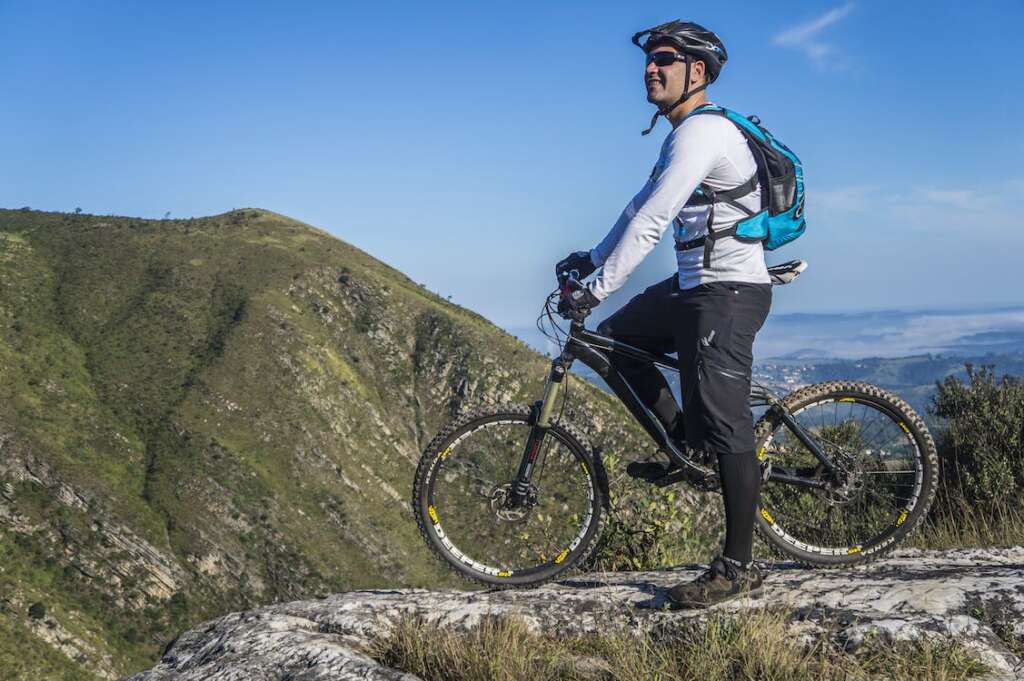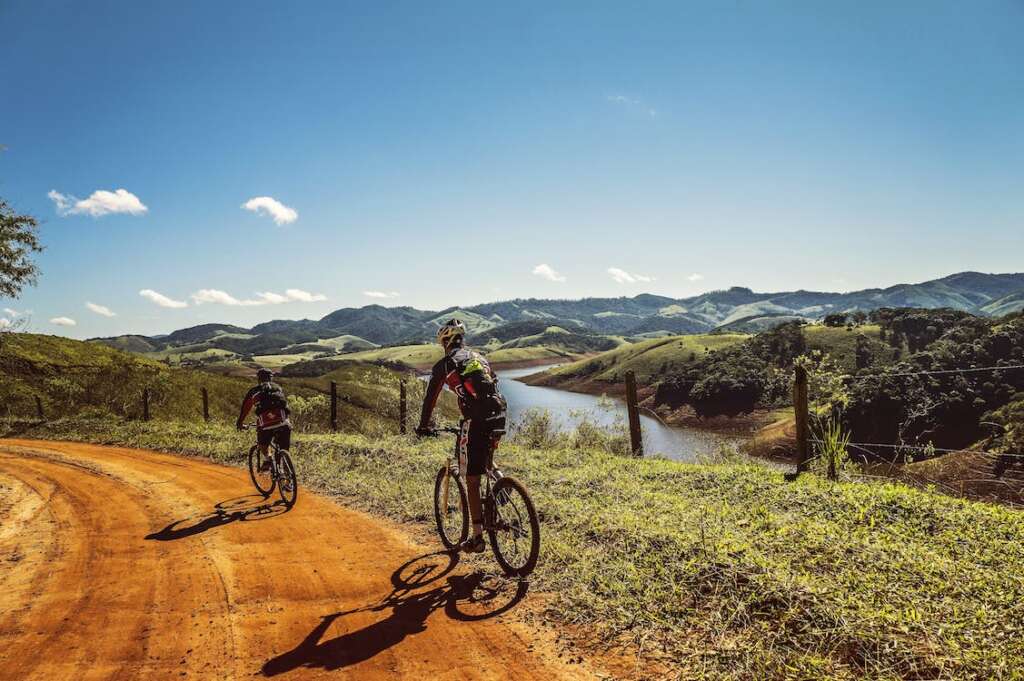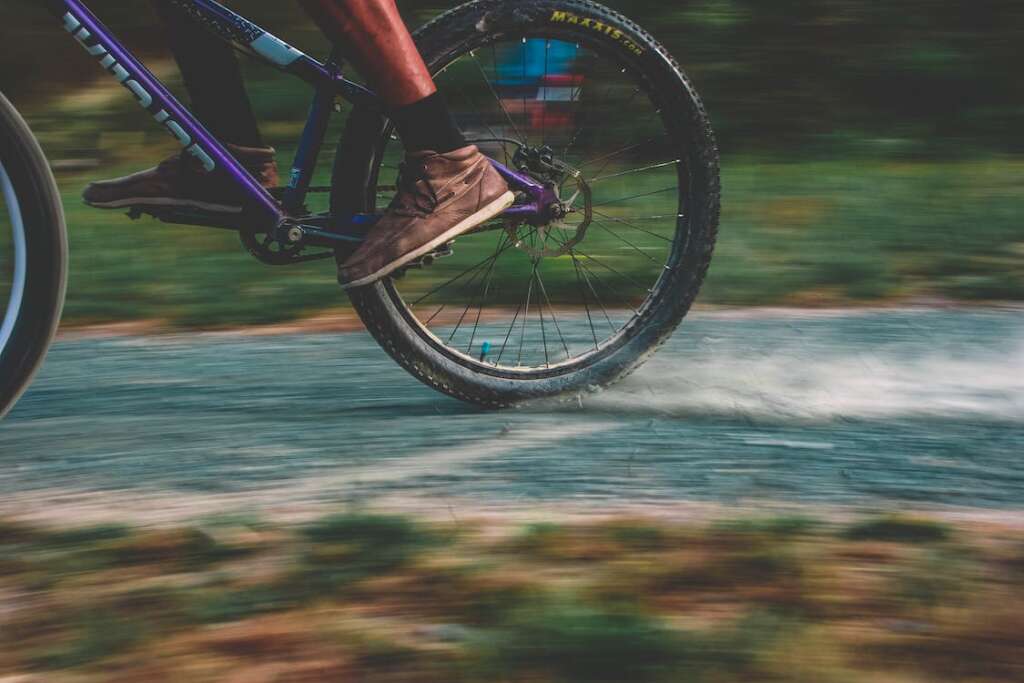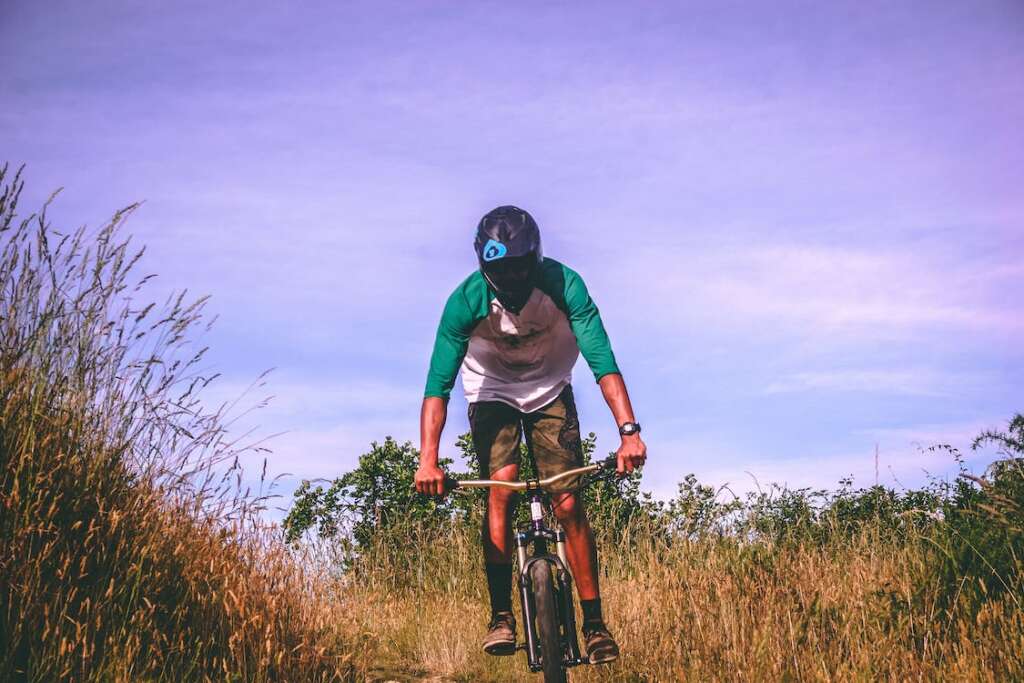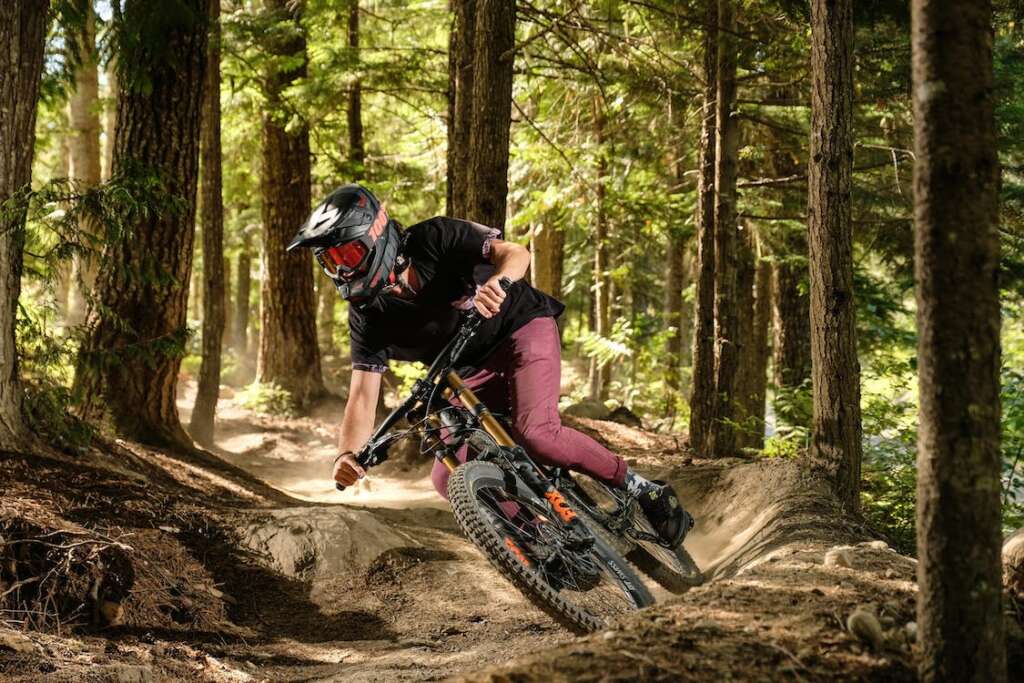Are you an avid mountain biker looking to keep your rides safe and fun in any season?
Whether you’re tackling a challenging mountain trail or cruising along the local fire road, there are several tactics you can use to ensure a great biking experience every time.
In this blog post, we’ll be covering everything from proper clothing selection to preventive maintenance tips — all aimed at helping you stay cool and ride safely no matter what Mother Nature throws your way.
So don’t wait another minute; let’s jump right in and get started on our journey of mastering trail-riding with these pro mountain biking tips and tricks:
Related: Mountain Biking Inspirational Success Story
1. Wear The Right Gear
Wearing the appropriate gear when mountain biking is essential for safety and comfort.
A well-fitted helmet is necessary to protect your head in case of a fall. Mountain biking gloves can protect your hands from blisters, cuts, and scrapes.
Consider wearing moisture-wicking clothes and appropriate footwear that provides support and comfort. Protective eyewear can also shield your eyes from dirt, debris, and UV rays.
Remember, choosing the right gear can enhance your performance and keep you safe on the trail.
2. Set Your Tire Pressure
Setting your tire pressure is one of the best mountain biking beginner tips that can make a big difference in the performance and comfort of your ride.
If your tires are too low, you’ll have less control and risk pinch flats. If your tires are too high, you’ll have less traction and a harsher ride.
Check the recommended tire pressure for your bike and adjust it based on the terrain and your weight.
Generally, lower tire pressure is better for loose and rough terrain, while higher tire pressure is better for smooth and hard-packed terrain.
3. Start With Easy Trails
If you’re new to mountain biking, start with easy trails. Look for marked green or blue trails, which means they are beginner-friendly.
Starting with easier trails is a mountain biking tip and trick that will help you build your skills and confidence before you move on to more challenging terrain.
4. Set Up Your Suspension
Mountain bikes are equipped with front and rear suspension to absorb impacts and maintain traction on the trail.
However, the performance of your suspension can be greatly improved by setting it up correctly for your weight and riding style.
The first step is to adjust the sag, which is the amount of suspension compression that occurs when you sit on the bike.
A good rule of thumb is to set the sag at around 25-30% of the total travel for the rear shock and 20-25% for the front fork. This will give you the optimal balance between comfort, control, and efficiency.
Once you’ve set your sag, you can fine-tune your suspension settings for the specific terrain you’ll be riding.
If you’ll be riding on a smooth and fast trail, you may want to increase the compression damping to reduce bobbing and improve pedaling efficiency.
If you are riding on a rough and technical trail, you may want to decrease the compression damping to improve traction and control.
5. Learn To Brake Properly
If you are learning how to ride a mountain bike risk-free, knowing how to brake properly is crucial.
Use both brakes evenly, and avoid using only the front brake, which can cause you to fly over the handlebars.
Practice braking before you hit the trails so you can get a feel for your bike’s stopping power.
6. Use Proper Body Positioning
Proper body positioning is probably the best mountain biking tip that is important for maintaining control and balance on the bike.
Keep your weight centered over the bike, and use your legs and arms to absorb shocks and maintain balance.
Keep your elbows and knees bent, and shift your weight forward or back depending on the terrain.
7. Look Where You Want To Go
Your eyes should always be looking ahead on the trail, not just a few feet in front of your bike. As you approach obstacles, look at the path you want to take around them rather than focusing on the obstacle itself.
It is an ingenious mountain biking tip for beginners that will help you anticipate the best line to take and adjust your body position and speed accordingly.
In addition, when looking ahead, it’s important to scan the trail for any upcoming obstacles or changes in terrain.
Look for rocks, roots, logs, or other obstacles that may require you to adjust your speed or line. By anticipating these obstacles, you can prepare yourself to navigate them smoothly and safely.
8. Stay Hydrated
Riding in the summer heat can quickly lead to dehydration, which can affect your performance and safety on the trail. If you are in search of mountain biking in the summer tips, make sure to drink plenty of water before, during, and after your ride.
A good rule of thumb is to consume at least one liter of water per hour of riding and bring enough water for the entire ride. You can also consider adding electrolyte supplements or sports drinks to replenish the electrolytes lost through sweat.
Over To You
Mountain biking is a thrilling and rewarding activity to do. It can take you to some of the most beautiful and unexplored places.
Reviewing these 8 mountain biking tips will help set you off on the right track from the start. Have fun, stay safe, and push your boundaries!
Learning the proper gear for each terrain type can make or break your ride, so be sure to put in the effort and research what best suits your needs.
Additionally, it’s prudent to invest in some quality protective equipment such as knee pads, elbow guards, and helmets to minimize any potential injury while out on the trails.
Above all else, challenge yourself as much as you feel comfortable with as you explore mountain biking – leave your worries behind and push off into uncharted terrain.


